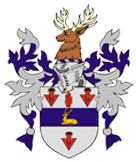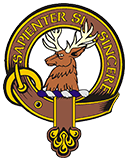Battles of Invernhaven And Perth – 1300s
What We “Know”: The Short Version

Bridge Over the River Tay at the North Inch
So what are we talking about exactly? Of all the accounts of the battle and its outcome, the “reigning champ”, and the one you will mainly see in print, goes as follows: “to settle an outstanding and otherwise irresolvable grievance between them, which resulted from actions during an earlier battle at Invernahavon wherein the Clans Chattan and Cameron met, the Davidsons and
There is more to the tale or, rather, there are just more tales, and we will explore some in detail below. But why so many variations? More importantly, how did this particular story start, and how did it come to be “the” story since there are variants aplenty? Evidence to support or even to refute the many variations has been scarce, but what has been available does as much to discredit each take as it does to lend weight to it. Besides, historians past and, until recently, present, can’t (or won’t) agree upon who it even involved. So, if the previous evidence – or its lack – is equal in quantity and quality from version to version, why the constant return to the uglier version of Davidson history as the “fall back” narrative, which has led to its propagation? More than likely, it stems from adherence to what is now thought of as “tradition” when there has been nothing more reliable at hand, and it was all hatched from and borne by the clout of a national icon.
Broken Histories and Oral Traditions
I’ll illuminate my point by beginning with a basic truth about the “dominant history” of the Clan and the North Inch. Many of you may be surprised to learn that the North Inch story comes in largest part from the hands of one of our most beloved Scottish figures: Sir Walter Scott. Scott was, among many other things, an amateur historian. Sometime in the early 1800s, he became privy to some scant archival records referring to the time period. These records included accounts of the North Inch battle that interested him enough to write about the event. However, what he based the bulk of his transliteration upon was a partial – and for the record, most now suggest a somewhat indiscernible and biased4 – document. The resulting story, in fact, has more footing in romance and fantasy than genuine history, and has been embellished with each retelling. But, a good tale grows and feeds its audience through time, deviating from its original course periodically to reflect the needs and current events of its society, so this should not be surprising. For the writer, of course, this had the added benefit of perpetual fame and lining the pockets with guineas, so accuracy may or may not have even been the goal.

